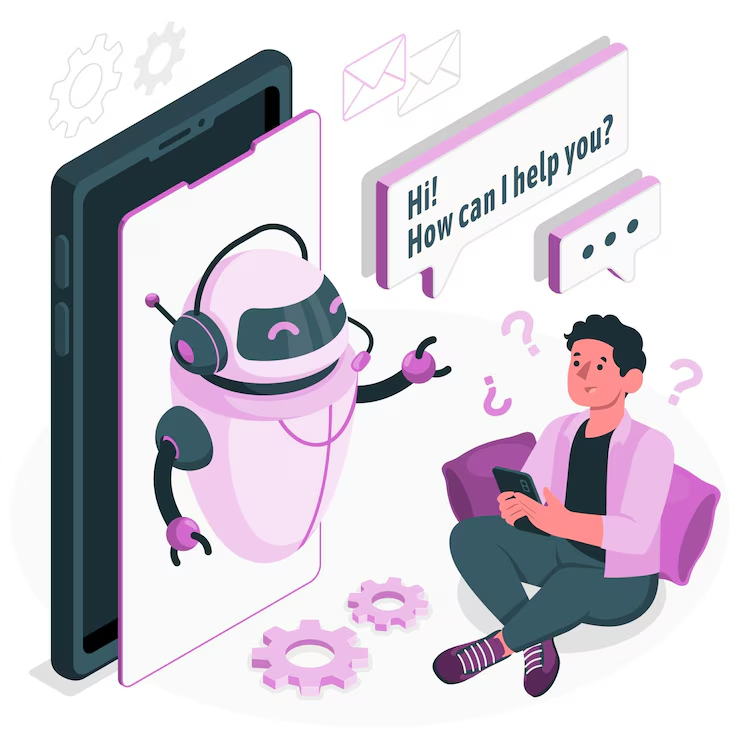In today’s fast-paced digital world, businesses in the United States are leveraging AI to enhance customer service. AI chatbots, particularly those developed using Python, are transforming customer interactions by providing instant, accurate, and personalized support. However, the challenge remains—how do we make these AI chatbots feel more human? This blog explores how to create AI chatbots for customer service, the impact of humanizing chatbots, and the role of companies like Maven AGI in AI-driven enterprise customer support.
Why AI Chatbots Are Essential for Customer Service
The Shift Towards AI in Customer Support
With businesses handling increasing customer inquiries, AI chatbots provide a scalable, cost-effective solution. They can:
- Respond to customers instantly, reducing wait times.
- Handle multiple queries simultaneously.
- Learn from past interactions to improve responses.
- Provide 24/7 support without human intervention.
The Role of Python in AI Chatbot Development
Python is one of the most popular programming languages for building AI-powered chatbots due to:
- Its vast libraries, such as TensorFlow and NLTK, which enhance natural language processing (NLP).
- Its easy syntax, making it accessible for developers of all levels.
- Its integration with machine learning and AI frameworks.
How to Create an AI Chatbot Using Python
Step 1: Choose a Development Framework
When developing an AI chatbot, selecting the right framework is crucial. Popular choices include:
- ChatterBot – A Python-based library that allows easy chatbot training.
- Dialogflow – Google’s NLP platform for building conversational agents.
- Rasa – An open-source machine learning framework for contextual AI chatbots.
Step 2: Train Your AI Model
To ensure the chatbot understands and responds effectively, it needs training data. This involves:
- Collecting customer service inquiries.
- Using NLP to interpret customer intent.
- Training the chatbot with sample responses.
Step 3: Implement Machine Learning & AI
AI chatbots improve over time by learning from user interactions. Machine learning algorithms help in:
- Predicting user queries based on previous interactions.
- Offering personalized recommendations.
- Enhancing sentiment analysis for empathetic responses.
Step 4: Deploy and Integrate the Chatbot
A chatbot is only effective if integrated into customer service channels. It can be deployed on:
- Company websites.
- Social media platforms like Facebook Messenger.
- Enterprise customer support tools such as Zendesk and Salesforce.
Estimating the Impact of Humanizing AI Chatbots
Why Humanizing Chatbots Matters
While AI chatbots provide efficiency, customers still value human-like interactions. Humanized chatbots:
- Increase customer trust and satisfaction.
- Improve engagement by mimicking natural conversation.
- Reduce frustration from robotic or repetitive responses.
Strategies for Humanizing AI Chatbots
- Natural Language Processing (NLP): Enhances chatbot comprehension and response accuracy.
- Conversational Design: Chatbots should use everyday language rather than robotic text.
- Emotional Intelligence: AI should recognize customer sentiment and adjust its tone accordingly.
- Personalization: AI chatbots should remember previous interactions to offer customized responses.
Real-World Impact in the U.S. Market
Companies in the United States using humanized AI chatbots have reported:
- A 40% increase in customer satisfaction scores.
- A 30% reduction in support costs due to automation.
- A 50% faster resolution time for common inquiries.
Maven AGI – AI Agents for Enterprise Customer Support
Who is Maven AGI?
Maven AGI is a leading company specializing in AI-powered agents for enterprise customer support. Their AI solutions help businesses optimize customer interactions through:
- AI-driven chatbots that adapt to user needs.
- Smart automation tools that reduce human workload.
- Data-driven insights for improving customer service efficiency.
How Maven AGI is Transforming U.S. Enterprises
- AI Chatbots for 24/7 Support: Providing around-the-clock assistance to customers.
- Multichannel AI Integration: Ensuring seamless support across emails, live chats, and voice interactions.
- Sentiment Analysis Technology: Detecting customer emotions and responding empathetically.
The Future of AI Chatbots in Customer Service
Challenges to Overcome
- Ensuring Ethical AI Use: AI chatbots must maintain transparency and fairness.
- Balancing AI with Human Support: AI should assist rather than completely replace human agents.
- Continuous Learning & Adaptation: AI chatbots must evolve to meet changing customer expectations.
Opportunities for Growth
- AI Chatbots in Healthcare: Enhancing patient support services.
- Retail AI Assistants: Helping customers with product recommendations.
- Financial AI Agents: Streamlining banking and investment support.
Conclusion
AI chatbots are revolutionizing customer service in the United States, offering fast, efficient, and scalable solutions. By using Python to create intelligent bots, businesses can provide humanized AI interactions that enhance customer satisfaction. Companies like Maven AGI are leading the way in AI-driven enterprise customer support, proving that the future of customer service is intelligent, automated, and customer-focused.
